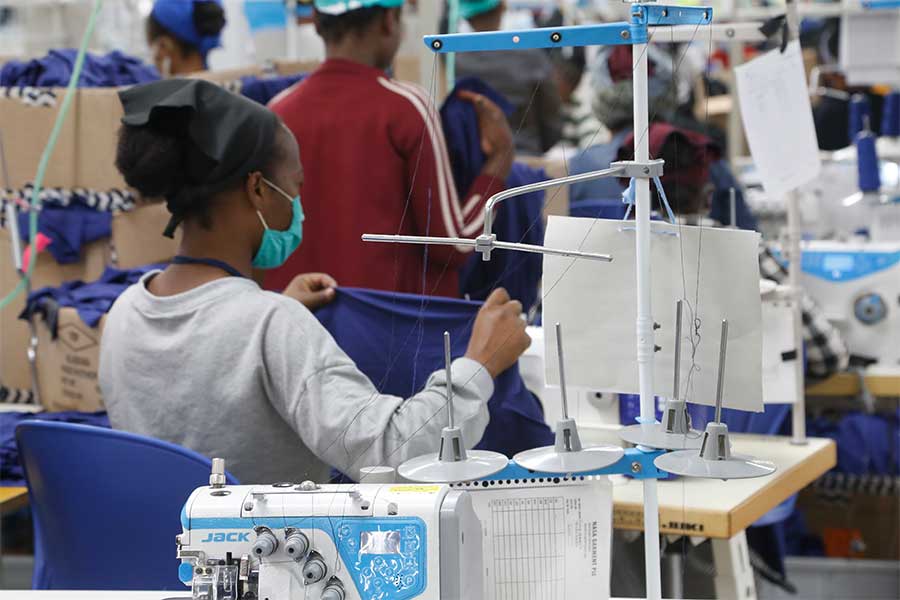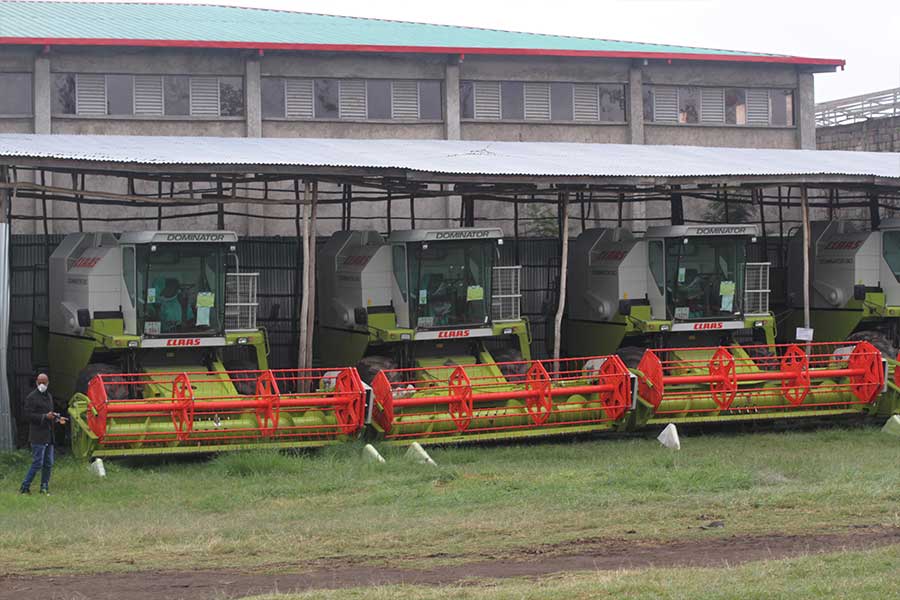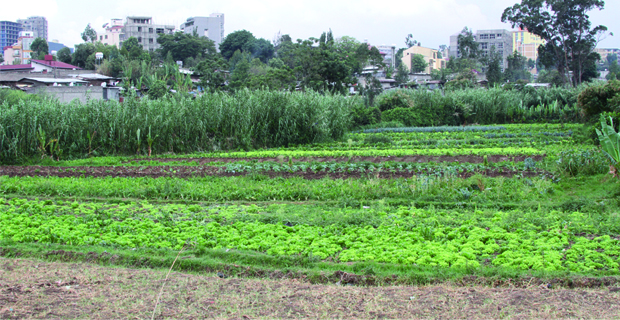
Commentaries | Jun 22,2024
Mohammed Ahmed's parents possess 75ha in Lower Awash Valley, an area that is known to be fertile and suitable for cotton plantations. His family of pastoralists rented out the entire farm to investors.
Located five kilometres away from the city of Asayita where his family resides, the farm was leased to investors for 2,000 Br a hectare. Mohammed, who lives in Asayita Wereda in Afar Regional State, first worked part-time during the summer for the cotton growers in the area who rented his parents’ land.
While working at the farm, he realised that the investors who rented their land and grew cotton made good money. He then started to think that he could also grow cotton on his parents’ land.
His family did not welcome his plan. They opposed him, saying that farming was not their culture. His mother, especially, told him not to farm the land or grow cotton. His family largely considered farming to be taboo and would result in a curse.
This did not stop him. Six years back, he stepped into farming and planted cotton. His elder brother tried to sabotage his farm and partially damaged it. Mohammed worked hard day and night to cultivate his cotton. He watered it sufficiently and cared for it properly.
He sold the first harvest for 110,000 Br. His family abruptly changed its tune after seeing the revenue Mohammed earned. He shared the money with his parents and siblings, creating joy among his family members.
Then the family gave him all the farmland to grow cotton, and he started helping himself and his family with the income he received from the farm. Until 2017, growing cotton resulted in excellent returns.
However, things changed three years back, and he has been struggling to survive in the cotton production sector. The challenges he started facing are beyond his capacity.
“It's very depressing,” said Mohammed.
The productivity of his cotton farm has declined very significantly. Three years ago, he harvested 2,100ql of cotton or 28ql a hectare. Last year, this number dropped by almost three-fold, and he collected just 11ql a hectare.
Last year his farm yielded 830ql of fibre, which he sold for 1.5 million Br, selling a kilogram of cotton fibre for 18 Br on average.
The productivity of his farm plummeted due to the shortage of bio-chemical inputs such as insecticides, herbicides and fungicides. Limited availability of agricultural machinery, market disruption, low demand for their products, and a limited workforce are additional challenges they face.
He used to go to Addis Abeba looking for these chemicals and inputs. Even if he managed to get these chemicals, they might be very toxic to the cotton crop. Mohammed and his neighbours do not know which chemicals to use, when to use it or how. The chemicals may sometimes expire and result in massive demise of the crop. As a result, he has preferred not to spray chemicals on the cotton plants at all.
“Last year, a friend of mine sprayed an expired pesticide on his 80ha of cotton, and eventually he got five quintals of cotton fibre a hectare,” he said.
Mohammed and the farmers in Asayita Wereda who cultivate 5,000ha of cotton plough the land once a year and sow it with cottonseed after watering the land for one to two months.
“Once you plough the land and you come back to sow the seed," he said, "you find the land infested with weeds, and it makes it harder to prepare it again."
The heavy weeds cover the cotton land after it is already prepared for cultivation, and it is very tough to remove easily. He is spending close to half a million Br to remove the weeds that infested his farmland.
As much as 10ql of weeds cover a hectare of land, and it needs four employees to work for a month and a half to clean the land completely. Mohammed pays 5,000 Br to 6,000 Br a hectare. He was paying 1.5 Br to a daily labourer to clear each kilogram of the weed, but the price of labour has risen four-fold.
Even getting daily labourers is very hard for him. The area is known for having higher temperatures and recurrent flash floods. These have resulted in higher costs for labour and losses of cotton production.
Higher prices for cottonseed and a lack of improved cotton varieties have also weakened the performance of the farmers in the area and retarded cotton productivity. Mohammed buys the seed from brokers for 6,000 Br a quintal.
There is a shortage of agricultural mechanisation machinery such as tractors and combines in the area. Finding fuel is also a problem. There is only one garage in Asayita town that rents tractors - forcing many farmers to compete for a small number of machines.
Mohammed uses oxen to plough the land for 300 Br, a pair of oxen that plough a quarter of a hectare a day. Along with the oxen, he hires two labourers for 120 Br a day.
“There is an additional expense to buy fodder for the oxen and food for the daily labourers,” he said.
To address these outstanding problems, 37 farmers including Mohammed, organised themselves to establish a cooperative union three years ago by contributing 5,000 Br each. But the registration of the union was rejected by the regulatory body due to a law that requires at least 50 members to form a union.
Floods have been another devastating problem in the Awash valley. Mohammed Awel is a cotton farmer in Dubti Wereda, 10Km east of Semera city. He prepared his farmland and was waiting for the summer to cultivate his farm.
However, a heavy and sudden flood washed away his 120ha farm that was ready to be harvested. The heavy flooding destroyed the three-kilometre main irrigation canal that stretched from the Tendaho Dam to Dubti.
The flood also destroyed 400ha of cotton farms and 24 canals through which the farmers irrigate their crops. Repairing the main canal requires a minimum of 200,000 Br.
“We don’t have enough money to repair all the canals,” said Mohammed.
The sector is suffering from these challenges even though it has the attention of the government. In the two editions of the Growth & Transformation Plan, which was recently replaced by the 10-Year Perspective Plan, textiles were among the areas of importance.
The country also has three million hectares of land that is suitable for cotton, but only 3.7pc of it has been utilised.
But it is the area that has benefited the least from the incentives it receives from the free-trade area arrangements through the African Growth & Opportunity Act (AGOA), Everything But Arms, Common Market for East & South Africa (COMESA), the East African Community and the South African Development Community.
By the end of the last fiscal year, the government planned for the export of textiles and garments to generate 778.8 million dollars. However, the revenues the 162,000-person industry generated was a far cry from the target at 171.1 million dollars.
Three years ago the country exported 3,529tn of cotton and 16,761tn of textile and garment products. The following year the export of cotton slumped to 252tn, while the export of textile and garment products grew to 19,888tn.
The value of Ethiopian cotton in the international market has also been declining from year to year. Two years ago, it shrunk by six Birr a kilogram from 39 Br. However, the value of textile and textile products has increased from 160 Br a kilogram three years ago to 216 Br a kilogram the following year.
The Textile Industry Development Institute is conducting assessments to devise ways to support the sector, according to Yonas Abesha, communications director at the Institute.
Due to the high cost of production, low demand and less revenue, cotton farmers in the northwest of the country, Gonder and Western Tigray, are shifting from cotton to sesame production, according to Bewuket Teshome, a lecturer of textile production at Bahir Dar University's Ethiopian Institute of Textile & Fashion Technology.
The production of cotton is laborious, and there is a large market for sesame products via the Ethiopian Commodity Exchange with higher prices than cotton, according to Bewuket.
“Due to similar challenges, farmers are shifting from cotton to sugarcane production in the Awash Valley,” said Bewuket, who conducted research on the sector.
Local market insufficiency, undeveloped market and value chains, market diversification problems, limited skills, reliance on obsolete equipment, and weak management systems, are among the main challenges to the sector, according to Bewuket.
The textile sector also suffers from the limited quantity and quality of local cotton, inefficient trade system, high costs, delivery delays, limited access to finance, limited quality and lower capacity of value addition, argues the researcher.
"The government should help the sector by availing technical and financial assistance to cotton farmers and textile and garment factories," recommends Bewuket.
"The government gives little attention to the ginning and textile end of production, while giving much attention to the garment," says Bewuket. "This obliges garment makers to import textile inputs and eventually make them incompetently due to the high overhead cost of production."
The expert also recommends the government consider skills development, promotion of foreign direct investment (FDI), and efficient use of trade information.
PUBLISHED ON
Oct 11,2020 [ VOL
21 , NO
1067]

Commentaries | Jun 22,2024

Fortune News | Mar 05,2022

Featured | Aug 16,2020


News Analysis | Dec 09,2023

Radar | Jul 20,2025

Radar | Jul 28,2024

Radar | Nov 14,2020

Radar | Sep 18,2022

Fortune News | Jan 05,2019

Dec 22 , 2024 . By TIZITA SHEWAFERAW
Charged with transforming colossal state-owned enterprises into modern and competitiv...

Aug 18 , 2024 . By AKSAH ITALO
Although predictable Yonas Zerihun's job in the ride-hailing service is not immune to...

Jul 28 , 2024 . By TIZITA SHEWAFERAW
Unhabitual, perhaps too many, Samuel Gebreyohannes, 38, used to occasionally enjoy a couple of beers at breakfast. However, he recently swit...

Jul 13 , 2024 . By AKSAH ITALO
Investors who rely on tractors, trucks, and field vehicles for commuting, transporting commodities, and f...

Oct 11 , 2025
Ladislas Farago, a roving Associated Press (AP) correspondent, arrived in Ethiopia in...

Oct 4 , 2025
Eyob Tekalegn (PhD) had been in the Governor's chair for only weeks when, on Septembe...

Sep 27 , 2025
Four years into an experiment with “shock therapy” in education, the national moo...

Sep 20 , 2025
Getachew Reda's return to the national stage was always going to stir attention. Once...